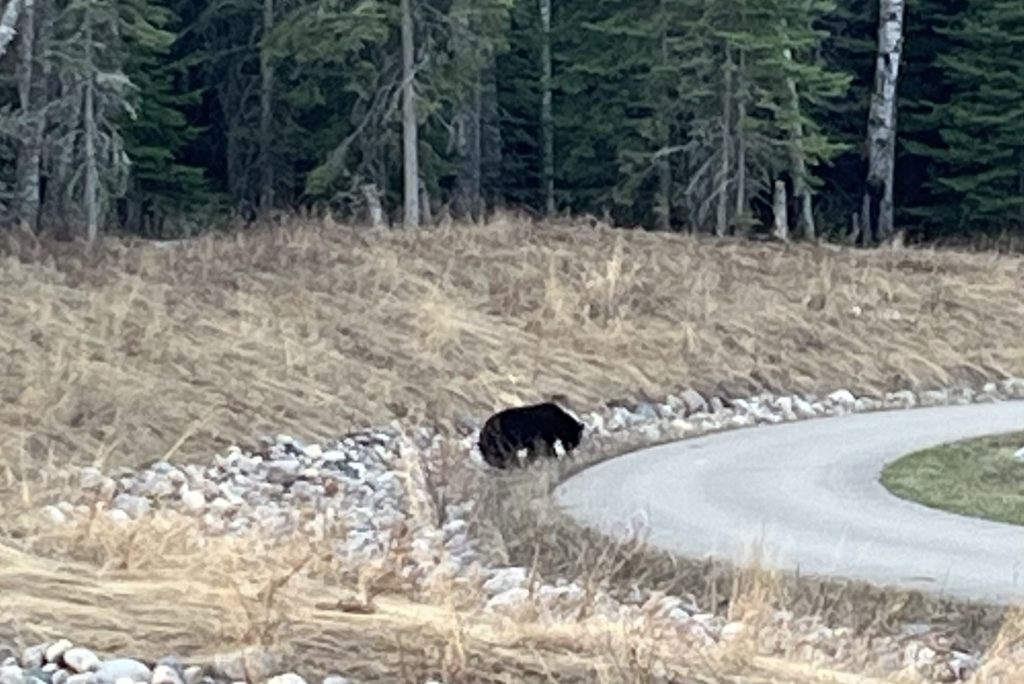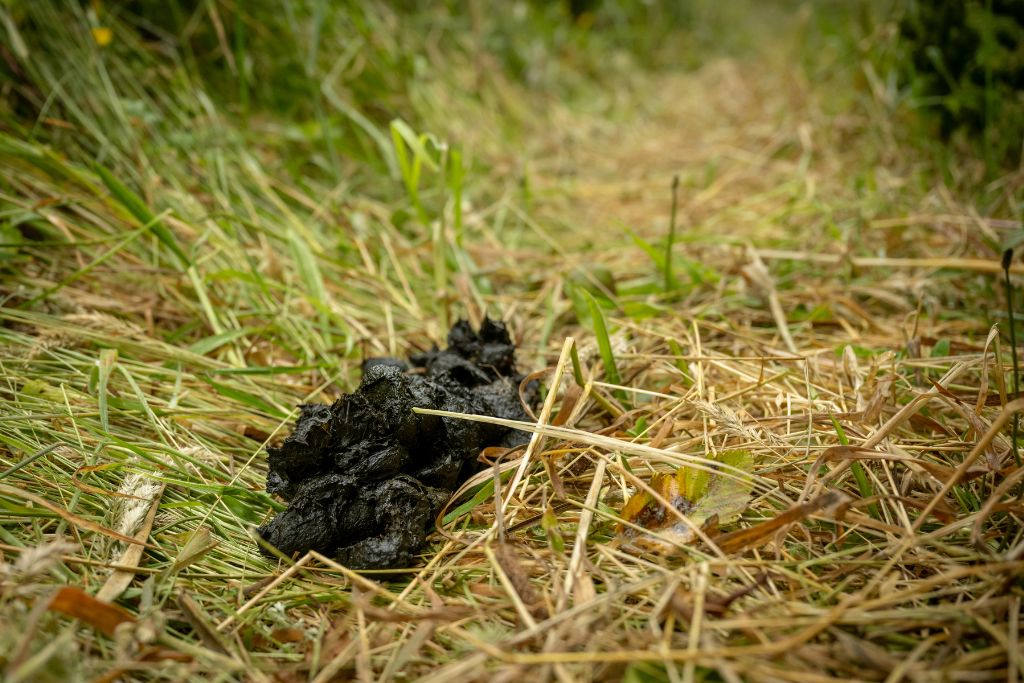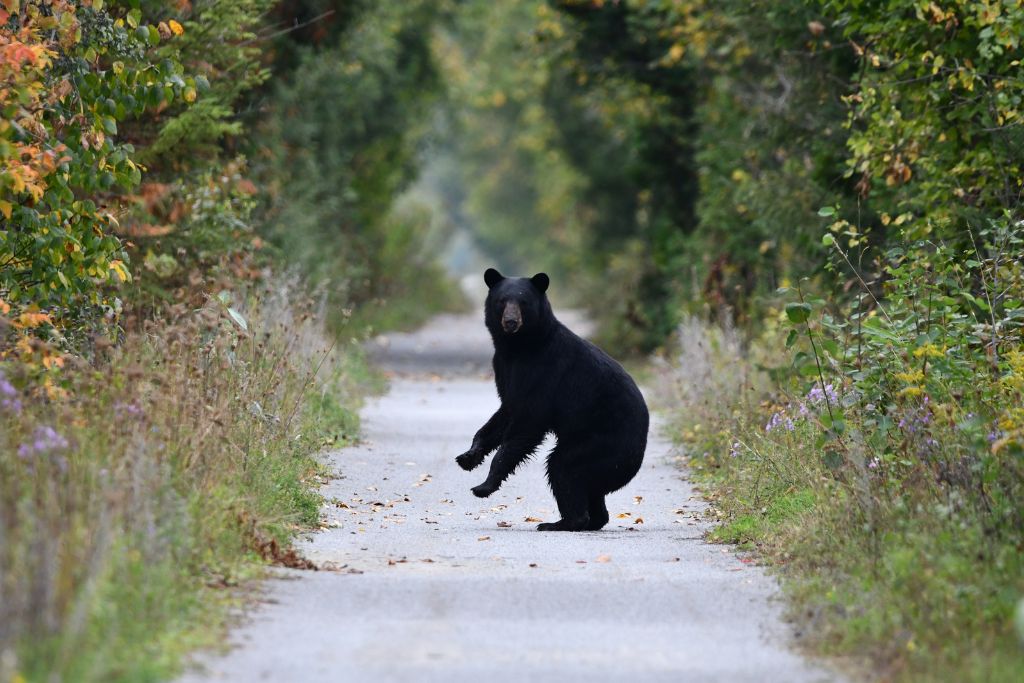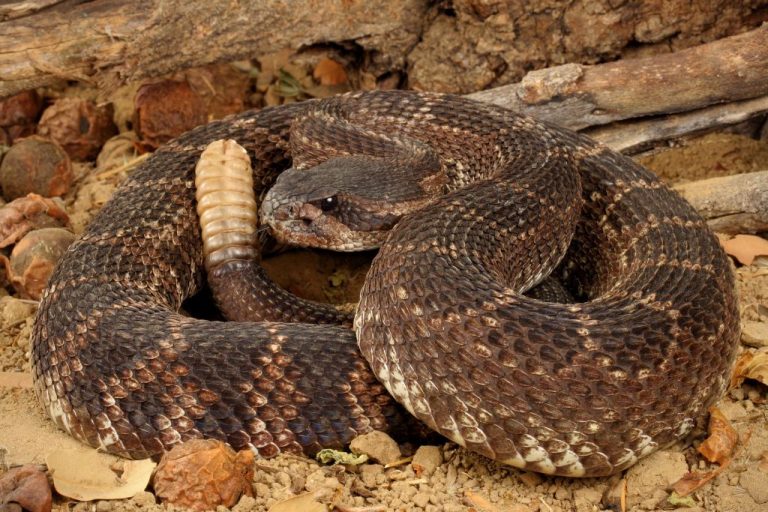Staying Safe in Bear Country
There’s a fine line between adventure and recklessness. Sometimes it’s hard to know where the line is, and on this trip we learned how blurry the line can get when it comes to bear safety on the trail.
With the first true summer weather breaking through, Craig and I decided to head up to Prince Albert National Park to hike Grey Owl’s Trail. At 40 km, it’s a long out-and-back route, and we were hoping to do the entire thing in one day. To get an early start, we drove up the night before and camped at the trailhead in our SUV
TL;DR:
We thought we were ready for a 40-km day hike—until signs of bear activity forced us to turn back after just 1.25 km. That close call sparked a deep dive into bear safety: how to prepare for hiking in bear country, spot bear signs, handle encounters, use bear spray effectively, and avoid common mistakes. This guide covers everything you need to know to stay safe and smart on the trail.
First Signs of Bear Activity
By 5:49 am we were packed, laced up, and ready to hit the trail.But we didn’t get far—just 200 metres in—when we spotted a bear near the trailhead. It didn’t seem to notice or care about us, so after a moment of hesitation and a shared glance, we decided to keep going.
(Did I mention we don’t always know where the line is?)
At the time, we didn’t realize that a bear ignoring you can actually be a warning sign—not a green light.
This hike was part of our training for our upcoming Rim-to-Rim Grand Canyon trek in just three weeks, so we were motivated. But we were also nervous. We didn’t have any bear spray, and we had no idea what was waiting for us deeper on the trail.
Spoiler alert- there was bear activity ahead!

It wasn’t long before we spotted bear scat—then a second and a third pile. Each step forward added to the tension. Our heads were on a swivel; our nerves were on high alert. Our anxiety was mounting, and our confidence in our life choices was dwindling!
Another 500 metres in we heard it: a massive crash in the bush off to our right. No need to investigate. We both knew only a bear could make that kind of noise.

Without a word, we knew it was time to call it quits. We spun around and started the loudest and fastest speed walk of our lives. At that point, we knew there was definitely a bear ahead—and probably another behind us.
Sure enough, when we got back to the trailhead, it was still there. But now, it wasn’t ignoring us. It was watching—intently—as we slipped past it and scrambled back into the safety of the SUV.
Eighteen minutes and twenty-five seconds. That’s how long our 40 km hike lasted. We managed a grand total of 1.25 km.
Back in the vehicle, we threw our packs into the back, shut the doors, and finally let our guard down. We looked at each other, laughed, and shook our heads, realizing just how close we came to putting ourselves in real danger.
Responsible hiking means knowing when it’s time to turn back. The trail belongs to nature first, and we are its guests.
When to Turn Back if Hiking in Bear Country
- Fresh Bear Scat
- Still moist or steaming, especially if found repeatedly along the trail.
- Indicates the bear is likely still nearby.
- Fresh Tracks
- Clearly defined paw prints in mud, sand, or snow.
- If they’re going the same direction as you—or are very recent—consider it a red flag.
- Bear Warning Signs at the Trailhead
- Parks often post alerts for recent bear sightings or aggressive behavior. Always take these seriously.
- Loud Bear Sounds
- Growls, huffs, jaw pops, or heavy crashing in the brush could signal agitation or a nearby bear.
- Carcass or Cached Animal Remains
- If you stumble upon a dead animal—especially partially buried—leave immediately. A bear is likely guarding it.
- Strong Musky Odour
- A pungent “wet dog” or musty smell can mean a bear is close, even if you can’t see it.
- Bear Seen Nearby and Doesn’t Leave
- If the bear lingers, watches you, or seems indifferent rather than fleeing, it may feel territorial.
- You’re in Poor Visibility Conditions
- Thick brush, poor light, or sharp turns can lead to surprise encounters. Combine that with signs above, and it’s smart to turn around.
Use Caution, But Don’t Panic
If the signs are old or scattered (dry scat, faint tracks), you can proceed cautiously while:
- Making noise
- Carrying bear spray
- Staying in a group
But if multiple fresh signs appear, or if your instincts raise red flags, it’s always safer to turn back. No training, view, or summit is worth the risk.
Pre Hike Planning
Before you hit the trail, preparation is your first line of defense.
When hiking in bear country, what you do before you step onto the path can make all the difference. From route planning to packing the right gear, these pre-hike safety steps will help reduce the risk of an encounter—and keep you ready if one happens.
Pre Trip Planning
- Research the Area
- Check for recent bear sightings, closures, or alerts from park authorities.
- Learn whether the area has black bears, grizzlies, or both.
- Travel in Groups
- Hike in groups of 3 or more; bear attacks are rare in larger groups.
- Carry Bear Spray
- Bring it and know how to use it. Keep it accessible—on a belt or chest strap, not in your pack.
- Avoid Hiking at Dawn, Dusk, or Night
- Bears are more active then, and visibility is reduced.
- Leave No Trace
- Pack out all food, trash, and scented items. Don’t leave anything behind that could attract bears.
On Trail Bear Safety
Being prepared is only half the battle. Once you’re actually on the trail, the choices you make in the moment matter just as much—especially in bear country. Here’s how to stay alert and safe as your hike unfolds.
Bear Safety on the Trail
- Make Noise
- Talk, sing, or clap—especially in dense brush, near running water, or on blind corners.
- Consider a bear bell, but human voices are more effective.
- Watch for Signs of Bear Activity
- Scat, tracks, clawed trees, flipped logs, or a strong musky smell.
- If you see multiple or fresh signs, turn back.
- Stay on Established Trails
- Avoid bushwhacking or taking shortcuts through dense vegetation.
- Keep Dogs Leashed or Leave Them Home
- Unleashed dogs can provoke bears and lead them back to you. *More tips on dog safety later.
- Store Food Properly
- Pack food in air tight containers or odour proof bags
- Keep food buried deep in your backpack
- Don’t bring strong-smelling snacks like tuna or jerky unless well-sealed.
Recommended Gear When Hiking in Bear Country
When it comes to bear safety, the right gear can make all the difference. While bear spray is a must-have, it’s only one part of a comprehensive safety strategy for hiking in bear country. Being prepared with the proper equipment not only helps prevent encounters but also gives you the tools to respond confidently if one happens. In this section, we’ll break down the essential gear every hiker should carry to stay alert, deter bears, and protect themselves on the trail.
Essential Bear Country Gear
As an Amazon affiliate I may earn a small commission on qualifying purchases at no extra charge to you if you purchase them from my link. I only recommend products I use and love or the I believe will add value to your trip. Thank you for supporting my blog.
🔔 Bear Bells or Noise Makers
- Attach to your pack or use intermittently to alert bears of your presence.
- Note: Human voices are more effective than bells alone.
- 👉🏼 Order on Amazon: Bear Bells and Whistle
🗣️ Whistle or Air Horn
- Loud noises can startle a bear and discourage further approach.
- Useful for scaring off curious wildlife or signalling for help.
- 👉🏼 Order on Amazon: Bear Horn
🚨 Personal Locator Beacon (PLB) or Satellite Messenger
- In remote areas, this can be a lifesaver if you’re injured or have a serious encounter.
- 👉🏼 Order on Amazon: Garmin inReach
- 👉🏼 Order on Amazon: Zoleo
🧢 Bright Clothing
- Makes you more visible to both bears and other hikers.
- Can help in case of rescue or signaling your location.
🥾 First Aid Kit with Trauma Supplies
- In case of a fall, scrape, or animal encounter, be ready to treat wounds quickly.
- Include antiseptic, gauze, bandages, and antihistamines.
🧳 Odour-Proof Bags or Bear-Resistant Canisters
- Keeps food, snacks, and scented items from attracting bears.
- Use even on day hikes, especially when stopping for lunch or snacks.
- 👉🏼 Order on Amazon: Odour Proof Bags
- 👉🏼 Order on Amazon: Hanging, Waterproof Bear Bags
🗺️ Map and Compass or GPS Device
- Know your route and potential escape or reroute options.
- Avoid getting lost and inadvertently stumbling into bear habitat.
💡 Headlamp or Flashlight
- Bears are most active during dawn and dusk—be prepared if caught out late.
- 👉🏼 Order on Amazon: Headlamps
Reacting to a Bear Encounter
Even with all the right precautions, encounters can still happen. If you do come face to face with a bear, your reaction can make all the difference. Stay calm, assess the situation, and respond based on the bear’s behavior—not panic. Here’s what to do if you come across a bear on the trail.
🐻 If You Encounter a Bear
- Stay Calm
- Don’t run. Speak calmly and back away slowly.
- Use Bear Spray If Necessary
- If the bear charges within 20–30 feet, deploy your spray aiming low and across the bear’s path.
- Know the Difference Between Bear Behaviours
- Defensive (mother with cubs) vs. predatory (following or stalking).
- React differently depending on the situation (stand ground vs. play dead vs. fight back).
Defensive vs Predatory Behaviour
Not all bear encounters are the same—and neither are the ways you should respond.
Understanding whether a bear is acting defensively or predatorily is critical when hiking in bear country. Defensive bears are usually reacting out of fear or protection—of cubs, territory, or food. Predatory bears, though rare, are stalking or testing to see if you’re prey. The body language, behavior, and context of the encounter can help you tell the difference—and choosing the right response could save your life.
Never run from a surprised, defensive, or predatory bear because it can trigger a predatory reaction. Do not try to climb a tree either. You cannot outrun or out climb a bear!
Defensive Behaviour (Most Common)
This happens when a bear feels surprised, threatened, or protective (especially a mother with cubs).
Signs of defensive behaviour:
- Huffs, jaw-popping, snorting
- Swatting the ground
- Charging but stopping short (a bluff charge)
- Standing on hind legs (to get a better view/smell)
What to do:
- Stay calm and don’t run.
- Talk calmly in a low voice.
- Slowly back away, without turning your back.
- Use bear spray if the bear approaches within 20–30 feet.
If Attacked:
- Black Bear- fight back
- Grizzly- play dead (lie flat or curl into a ball, protect neck and vital organs). This tells the bear you are not a threat.
Predatory Behaviour (Rare but Serious)
This is when a bear is curious, sees you as food, or is testing boundaries. This type of behavior is more likely with black bears, but it can happen with grizzlies too.
Signs of predatory behaviour:
- Bear follows you or approaches silently
- No signs of fear or agitation
- Low body posture, focused movement
- Stalks or circles you deliberately
What to do:
- Do not run or play dead.
- Stand your ground and make yourself look larger.
- Speak firmly and loudly.
- Pick up rocks or sticks, throw them if necessary.
- Be ready to use bear spray.
- If it attacks: fight back with everything you’ve got—aim for the bear’s face and snout.
Standing Your Ground vs Backing Away
When you encounter a bear in the wild, knowing whether to stand your ground or back away can be the difference between a safe retreat and a dangerous mistake. The right response depends on the bear’s behavior and species—and misreading the situation can escalate the encounter. This section will help you understand when to stay put, when to slowly increase your distance, and how to interpret a bear’s signals so you can react confidently and appropriately.
Stand Your Ground or Back Away?
🛑 Stand Your Ground if:
- The bear begins to:
- Approach
- Follow
- Bluff charge
- Aggressively charge
⚠️Tips For Standing Your Ground
- Black or Grizzly Bear
- Stay together.
- Prepare to use bear spray
- Black Bear -Try to intimidate
- Make yourself look bigger by raising your arms and jacket, and/or standing on a rock or stump.
- Yell “Hey bear” loudly.
- Make noise (wave arms, shout, clap, bang stick).
- Grizzly -Show you are not a threat or prey
- Stay calm.
- Do not make eye contact.
- Only attempt to look bigger if the grizzly has predatory behaviour.
*Do not stand your ground or back away if the bear is making physical contact.*
- Grizzly Defensive attack (e.g., surprised, protecting cubs).
- Play dead- Lie face down legs spread apart with hands over your neck. Stay still until the bear leaves.
- Black bear or predatory behaviour (stalking, silent, fixated on you)
- Fight back with everything you have.
✅ Back away if:
- The bear hasn’t noticed you yet.
- Stay quiet, avoid sudden movements, and slowly increase distance without drawing attention.
- The bear sees you but isn’t approaching.
- Speak calmly.
- Avoid direct eye contact.
- Slowly back away without turning your back or running.
- The bear has stopped approaching you
- The bear is showing signs of stress or discomfort (huffing, swaying, jaw popping).
- These are warnings—give it space and back away calmly.
- You see cubs or a carcass nearby.
- You may be in a defended area. Quietly and quickly increase your distance.
- You’re unsure of the bear’s intent but it’s not charging.
- Backing away gives you more time and space to react if the situation escalates.
⚠️ Tips for Backing Away Safely:
- Have bear spray in hand, ready to use if the bear follows or charges.
- Move slowly and steadily. Sudden movements can trigger a chase response.
- Keep your eyes on the bear, but don’t make direct eye contact.
- Talk softly to let the bear know you’re human, not prey.
Bluff Charge vs Aggressive Charge
When a bear charges, it’s one of the most terrifying moments you can face on the trail—but not all charges are the same. Some are meant to scare you off (a bluff), while others are serious (an aggressive or real charge). Knowing the difference can help you stay calm and respond appropriately. Here’s how to tell which type of charge you’re dealing with—and what to do next.
Bluff Charges (Most Common)
A bluff charge is the bear’s way of saying, “Back off!” It’s meant to intimidate you, not injure you.
Signs of a bluff charge:
- The bear may huff, snort, or jaw-pop before charging.
- It runs toward you, then stops or veers off suddenly.
- It may stand on its hind legs first to get a better look or smell.
- Ears are often upright or slightly forward.
- Happens when a bear is startled, feels cornered, or is protecting cubs or food.
What to do:
- Stay calm. Do not run.
- Stand your ground.
- Speak calmly and firmly.
- Slowly back away after the bear stops.
- Be ready to use bear spray if it closes the distance.
Aggressive (Real) Charge
An aggressive charge means the bear intends to make contact. These are rare, but they happen, especially if the bear sees you as a threat—or as prey.
Signs of an aggressive charge:
- Bear charges without warning or huffing.
- Head is low, ears pinned back.
- Eyes locked on you, body posture focused and direct.
- Often seen in predatory black bears or highly threatened grizzlies.
What to do:
- Use bear spray when the bear is within 20-30 feet.
- If the bear makes contact:
- For grizzlies in a defensive situation, play dead (lie face down or in a ball, protect your neck).
- For black bears or any predatory attack, fight back with everything you’ve got—aim for the face and snout.
Identifying Grizzly or Brown Bear
When it comes to bear safety on the trail, knowing whether it’s a black bear or a grizzly (brown) bear is critical because your response may differ depending on the species. While the names suggest colour is the giveaway, that’s one of the most misleading clues—black bears can be brown, cinnamon, or even blonde, and grizzlies can be nearly black. Instead, there are more reliable physical traits and track patterns you can use to identify which bear you’re dealing with. Here’s how to tell the difference quickly and confidently.
🐾 How to Tell if It’s a Black Bear or a Grizzly Bear
- Shoulder Hump
- Grizzly: Prominent muscular hump above the shoulders (used for digging).
- Black Bear: No shoulder hump; back appears more level or slopes down from rear to front.
- Face Profile
- Grizzly: Dished (concave) face profile between eyes and nose.
- Black Bear: Straighter, more Roman-nosed profile.
- Ears
- Grizzly: Shorter, rounded ears.
- Black Bear: Taller, more pointed ears.
- Tracks
- Grizzly: Toe prints in a curved line; large gap between toes and the ball of the foot. Claw marks often visible far ahead of toes.
- Black Bear: Toe prints form more of an arc or straight line; claw marks closer to toe prints.
For more information on identifying bear species, check the US National Park Service
Bear Spray- Know How to Use It
Bear spray is one of the most effective tools you can carry when hiking in bear country—but only if you know how and when to use it. Misusing bear spray can put you at greater risk or reduce its effectiveness in a real encounter. In this section, we’ll cover the essential dos and don’ts of bear spray, so you’re prepared to act quickly, confidently, and safely if a bear gets too close.
Bear Spray Do’s and Don’ts
Always have bear spray easily accessible AND know how to use it when hiking in bear country
✅ Do
- Carry it where you can reach it quickly (holstered on your hip or chest, not buried in a pack).
- Check the expiry date before each season—expired spray may not work effectively.
- Practice removing the safety tab so you’re familiar with it in an emergency.
- Use it at the right distance—spray when the bear is within 20–30 feet and approaching.
- Aim low and sweep side to side—create a cloud the bear has to run through.
- Watch wind direction before spraying to avoid blowback.
- Bring one can per person when hiking in bear country.
❌ Don’t
- Don’t substitute bear spray for preparation—it’s a last resort, not a plan.
- Don’t test spray it unnecessarily—it wastes contents and can attract bears if not cleaned properly.
- Don’t keep it in extreme heat (like on a car dashboard) or cold—it may lose pressure.
- Don’t rely on it if it’s expired, damaged, or leaking.
- Don’t spray it into the wind
This video from Banff National Park shows you how to properly use bear spray, so you can be prepared if you’re ever in a situation where you need it.
Keeping Your Dog Safe When Hiking in Bear Country
Bear safety is more important than ever where hiking with your dog as it comes with added risks. Dogs can unintentionally provoke bears by barking, chasing, or wandering into their space—then leading a frightened or angry bear straight back to you. Even well-trained dogs may trigger defensive behavior in bears. That’s why it’s essential to understand the extra precautions needed to keep both you and your four-legged companion safe on the trail.
🦮 Bear Safety and Dogs
✅ Do’s
- Keep your dogs on a non retractable leash at all times
- Choose high traffic trails
- Make lots of noise
- Trust your dog’s instincts- Turn back if your dog starts growling, sniffing intensely, or acting nervous.
Dogs often sense bears before we do. - Use Bear Spray from 30 feet away.
- An airhorn can signal help or possibly deter both the bear and the dog.
❌ Don’ts
- Don’t let your dog off leash- even if it’s well trained.
- Walk at dawn, dusk, or night in known bear areas
- Let your dog bark at, lunge at, chase, or corner a bear.
- Assume a bear will ignore your dog if it’s quiet.
- Try to rescue your dog if it is in a fight with a bear.
For more information on bear safety with dogs check bearwise.org
Bear Safety Wrap up
In retrospect, we were completely unprepared to be hiking in bear country. While many people associate bear country with Alberta or B.C., it’s easy to forget that northern Saskatchewan is home to bears as well. Bear safety isn’t just about having the right gear—it’s about being mentally prepared to make the right call when conditions aren’t safe.
As hikers, we know that responsible adventuring means more than just following Leave No Trace principles. It also means respecting the trail, the wildlife, and knowing when to turn back. Nature doesn’t owe us a summit or a destination—it demands our humility.
We weren’t fully prepared that day, but we were wise enough to listen to our instincts and the signs around us. We’ll return to the trail with better preparation, a deeper understanding of bear country, and the hope that next time, the wild welcomes us in and gives us the green light to encounter its wonder and beauty.


